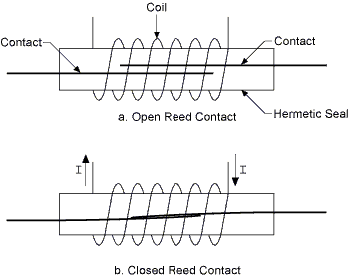Sida 1 av 1
Identifiering + problem med relä
Postat: 17 augusti 2011, 22:07:39
av säter
Jag har ett relä i mitt CNC-system som uppför sig konstigt.
När reläet är varmt vill det inte "släppa".
Jag har iof inte mätt spänningen på manövern, men reläet "släpper" direkt med kylspray.
Jag har lite svårt att förstå att ett relä kan uppföra sig på det viset.
Här finns väl expertis som kan klargöra vad som troligen händer.
Bild på relä.
2011_07100391.JPG
Re: Identifiering + problem med relä
Postat: 17 augusti 2011, 23:23:45
av bachler
Dem dära reläerna är väl av typen reed relä

Jag antar att detdär har fungerat och suttit där ett tag. Ser så ut på bilderna.
Om man utgår att det är fel på reläet och inget annat som orsakar problemet.
Ifall dom har "svetsat" någon gång så kontaktytan har blivit förstörd så att det svetsar varje gång.
När du sedan sprayar kylspray på det så kanske kontakt "flärparna" blir kortare så att svetsen släpper.
Jag skulle löda bort reläet och byta ut det mot ett nytt.
Sedan kan du ju dissikera detdär reläet och titta efter vad som var felet.
http://zone.ni.com/devzone/cda/tut/p/id/2774
Because of the smaller, less massive contacts and the different actuating mechanism, a reed relay can switch about 10 times faster than an electromechanical relay with equivalent ratings. The reed relays’s mechanical lifetime is also much higher than an electromechanical relay. The tradeoff, however, is that the smaller contacts on the reed relay make it much more susceptible to damage from arcing when closing a circuit. When an arc jumps across the contacts, it can melt a small section of the contact surface. If the contacts are still closed when the molten section re-solidifies, the contacts may weld together. The spring force in the reeds is often not sufficient to mechanically break the weld after the drive current has been turned off which renders the relay unusable. Electromechanical relays may also be damaged from arcing but the energy required to cause this is much higher.
Because reed relays are so susceptible to contact damage, inrush currents from system capacitance can be particularly dangerous. Inrush currents can be controlled with a series impedance, such as a resistor or ferrite, between the relay and the capacitance. Any capacitance in the system can contribute to inrush currents, whether it is in a reactive device under test or from a shielded cable.
The ferromagnetic materials from which reed relays are constructed cause them to have a higher thermal EMF than an equivalent electromechanical relay. Reed relays are thus not ideal for extremely low-voltage applications as their thermal EMF may introduce enough noise to cause errors in your measurements.
